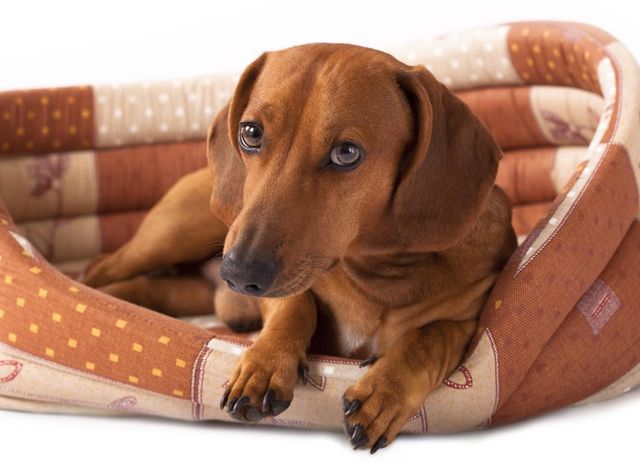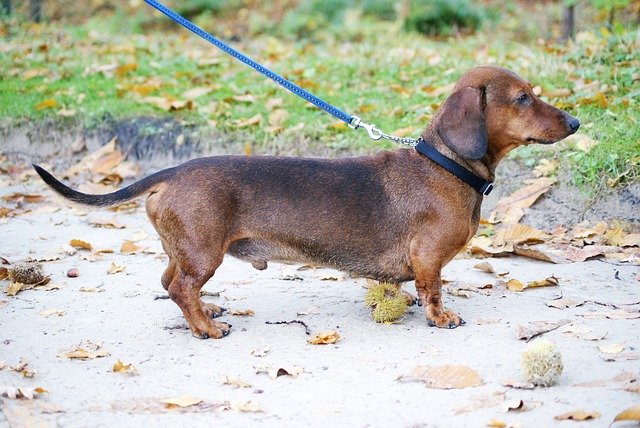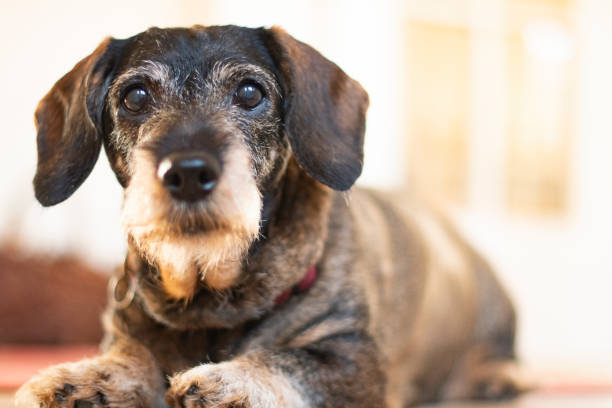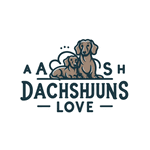Dachshunds, with their distinctive long bodies and short legs, are a beloved breed known for their lively personalities and unique appearance. However, this same anatomy makes them particularly prone to intervertebral disc disease (IVDD)—a condition that can lead to pain, mobility issues, and even paralysis. As a responsible dachshund owner, understanding the causes, symptoms, treatments, and preventive measures of IVDD is essential for ensuring your furry friend’s health and happiness. This guide provides a comprehensive overview to help you care for your dachshund effectively.
Contents
- 1 Anatomy and Risk Factors: Why Dachshunds Are Prone to IVDD
- 2 Recognizing Symptoms and Stages of IVDD
- 3 Diagnosing and Treating IVDD in Dachshunds
- 4 Managing IVDD: Lifestyle Adjustments and Therapies
- 5 Preventing IVDD in Dachshunds: Proactive Care Tips
- 6 Living with IVDD: Supporting Your Dachshund
- 7 Conclusion
Anatomy and Risk Factors: Why Dachshunds Are Prone to IVDD

The spine of a dog consists of small bones called vertebrae, separated by soft intervertebral discs that act as shock absorbers and allow for spinal flexibility. In dachshunds, these discs are more susceptible to degeneration and herniation due to their unique body structure.
Key Risk Factors for IVDD in Dachshunds:
- Genetics: Dachshunds are genetically predisposed to IVDD due to their elongated backs and short legs. This structure places added strain on their spines.
- Obesity: Excess weight increases pressure on the spine, exacerbating the risk of disc issues.
- Age: Older dachshunds are more likely to develop IVDD as the discs naturally degenerate over time.
- Lifestyle: Activities that involve jumping or rough play can strain the spine and increase the likelihood of disc injuries.
Recognizing Symptoms and Stages of IVDD

Early detection is critical to managing IVDD effectively. Being aware of the symptoms and progression stages can help you seek timely veterinary care.
Common Symptoms:
- Reluctance to move, jump, or play.
- Signs of pain, such as whining, yelping, or sensitivity when touched.
- Difficulty walking or standing.
- Weakness or wobbliness in the limbs.
- Loss of bladder or bowel control.
- Paralysis in severe cases.
Stages of IVDD:
- Stage 1: Mild disc changes with little or no visible symptoms.
- Stage 2: Disc bulging, leading to mild discomfort or stiffness.
- Stage 3: Disc herniation causing noticeable pain and potential nerve damage.
- Stage 4: Severe spinal cord compression resulting in paralysis or loss of function.
Prompt intervention during early stages can prevent further progression and improve your dachshund’s quality of life.
Diagnosing and Treating IVDD in Dachshunds

Diagnosis:
If you suspect IVDD, consult a veterinarian immediately. Diagnosis typically involves:
- Physical Examination: Assessing mobility, pain response, and reflexes.
- Imaging Tests: X-rays, CT scans, or MRI to confirm the extent and location of disc damage.
Treatment Options:
Treatment depends on the severity of the condition. Common approaches include:
- Conservative Treatment:
- Rest: Strict crate rest for 4–6 weeks to allow the spine to heal.
- Medication: Non-steroidal anti-inflammatory drugs (NSAIDs) or corticosteroids to reduce pain and inflammation.
- Supportive Care: Managing bladder function and providing assistance with mobility.
- Surgical Intervention:
- Surgery may be necessary for severe cases involving herniated discs or paralysis. Procedures like hemilaminectomy relieve pressure on the spinal cord and prevent further damage.
- Post-operative care includes physical therapy and strict activity restrictions.
Prognosis:
The success of treatment depends on the stage of IVDD at diagnosis and the timeliness of intervention. Many dachshunds recover well with appropriate care, but severe cases may result in permanent mobility issues.
Managing IVDD: Lifestyle Adjustments and Therapies

In addition to medical treatment, lifestyle changes and therapies can help manage IVDD and improve your dachshund’s quality of life.
Weight Management:
Maintaining a healthy weight is crucial to reducing stress on the spine. Feed your dachshund a balanced diet and consult your vet for portion recommendations.
Low-Impact Exercises:
- Swimming: Strengthens muscles without putting pressure on the spine.
- Gentle Walks: Helps maintain mobility and overall fitness. Avoid high-impact activities like jumping or running on hard surfaces.
Physical Therapy:
Your vet may recommend physical therapy to rebuild strength and mobility. Exercises such as range-of-motion stretches and hydrotherapy can be highly effective.
Alternative Therapies:
- Acupuncture: Can alleviate pain and improve nerve function.
- Massage: Helps reduce stiffness and promotes relaxation.
Preventing IVDD in Dachshunds: Proactive Care Tips

While dachshunds are predisposed to IVDD, proactive care can help minimize the risk and severity of the condition.
Prevention Tips:
- Avoid Jumping: Use ramps or stairs to prevent your dachshund from jumping on and off furniture.
- Regular Exercise: Provide consistent, low-impact activities to keep muscles strong and maintain spinal health.
- Monitor Weight: Prevent obesity through a balanced diet and portion control.
- Gentle Play: Avoid roughhousing that could strain the spine.
- Routine Check-Ups: Annual vet visits can catch early signs of IVDD and other health issues.
Living with IVDD: Supporting Your Dachshund
Even with IVDD, many dachshunds can lead happy, fulfilling lives with the right care and support. Mobility aids such as harnesses or wheelchairs can help maintain independence for dogs with limited mobility.
Emotional Care:
- Provide plenty of affection and reassurance to help your dachshund feel secure.
- Adapt their environment to make it safe and comfortable, such as providing orthopedic beds and easy access to food and water.
Conclusion
Intervertebral disc disease is a challenging condition for dachshunds, but with awareness, prompt action, and ongoing care, it is manageable. By recognizing symptoms early, seeking timely veterinary treatment, and implementing preventive measures, you can ensure your dachshund remains as healthy and happy as possible. With your love and support, your furry friend can continue to enjoy a high quality of life, despite the challenges of IVDD.
